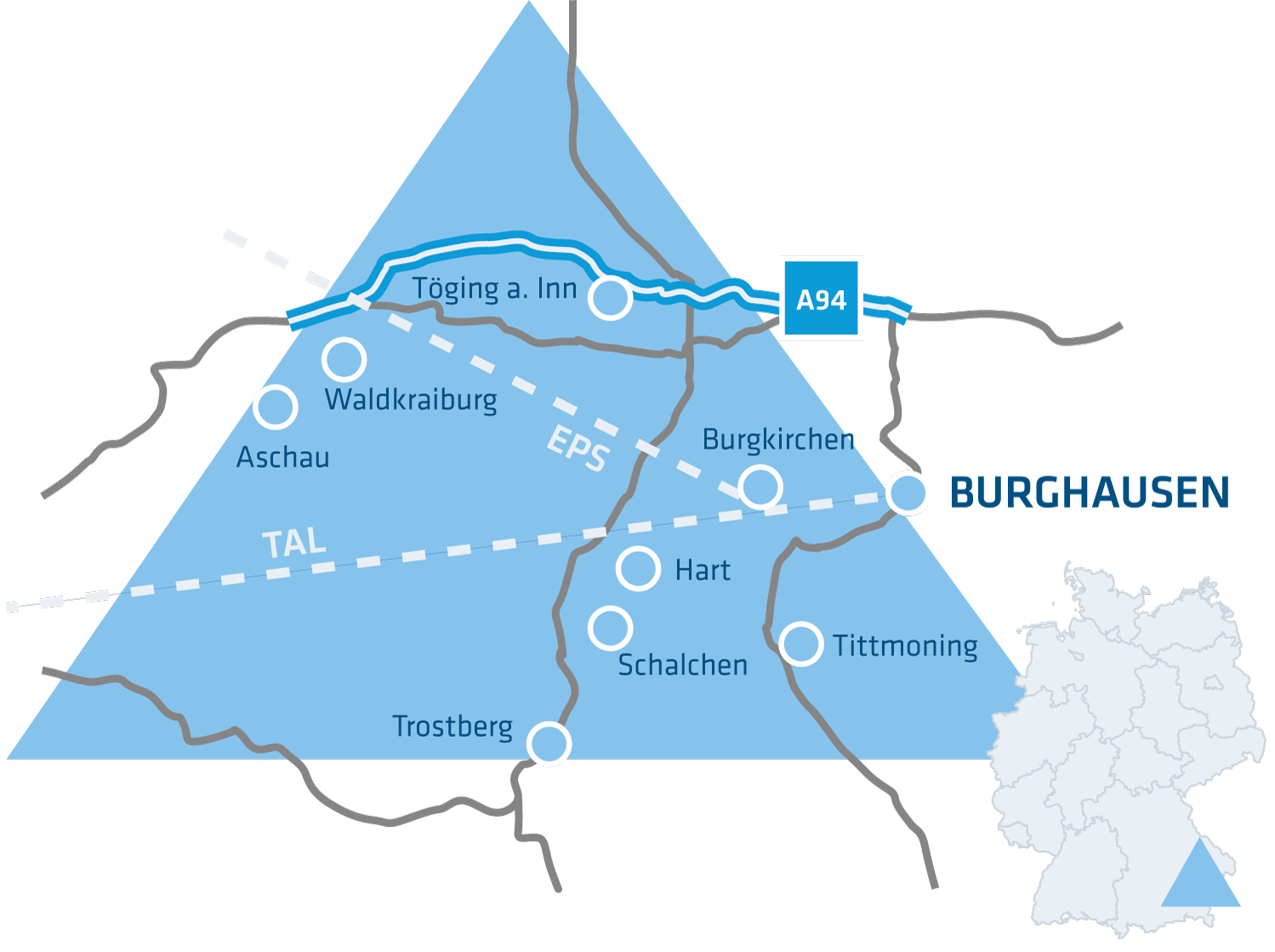H2 use for climate-neutral transformation of the chemical industry

A project of RegioInvest Inn-Salzach GmbH, Initiative ChemDelta Bavaria, Wacker Chemie AG, OMV Deutschland GmbH, KombiTerminal Burghausen GmbH, DB Cargo BTT, Technische Hochschule Rosenheim and H2 Süd Wasserstoff Initiative Bayern & Baden-Württemberg.
The planned energy transition is set to transform industry and mobility
Initial situation
Burghausen / ChemDelta Bavaria, the largest chemical region in Bavaria with 18 globally operating companies, 20,000 employees, over €10 billion in sales and more than €4 billion of investment in recent years, is the state’s biggest user of hydrogen.
The companies based there are meeting the challenge of climate-neutral transformation by using hydrogen as an energy source and a potential basis for additional and new raw materials for chemicals. This requires the availability of large quantities of renewable electricity and green hydrogen.

With over 20,000 employees, the approx. 30 companies located in the Bavarian chemical triangle (18 of which are aligned in the ChemDelta Bavaria initiative) generate a total sales volume of around €10 billion per year. This means that around 50% of all people employed in Bavaria's chemical industry generate over 6% of German chemical sales at ChemDelta Bavaria.
Key challenges:
- Chemical processes and products consume lots of electricity, and should be based on electricity from renewable energies in the future. In southern Germany, nuclear power stations are being phased out, production of secure base load continues to fall, and power grid instabilities are increasingly expected.
- These days, chemical processes and products are predominantly based on the use of fossil carbon sources and require a change in chemical value-added: development of a value chain for green platform chemicals and a recycling economy.
- Northern Germany is currently the region where renewable-energy grids are expanding and potential industrial-scale green hydrogen producers are situated.
- The planned connection to the grid-bound H2 backbone is not scheduled until 2040: initialisation of a rail-bound H2 backbone for southern Germany for synchronisation of supply and demand is essential to the future viability of ChemDelta Bavaria.
- Factory traffic, heavy-duty traffic and local public transport must be converted to emission-free drive concepts. This requires the development of an H2 filling-station infrastructure in the Burghausen/ChemDelta Bavaria region.
Our goals:
- The largest Bavarian chemical location aims to lay the foundations for the future viability of the site, job security and social welfare in the region.
- However, entering the hydrogen economy requires huge political support and funding at regional, federal and EU level.
- The H2 Real-World Laboratory Burghausen/ChemDelta Bavaria is of crucial importance to the state of Bavaria. It creates the conditions for successful market take-off.
- The project partners have shown their willingness to invest. Substantial boosting of investment with public funds is essential to achieving economic efficiency.
